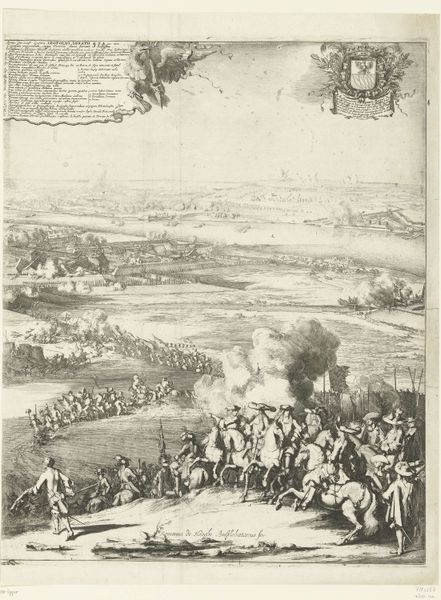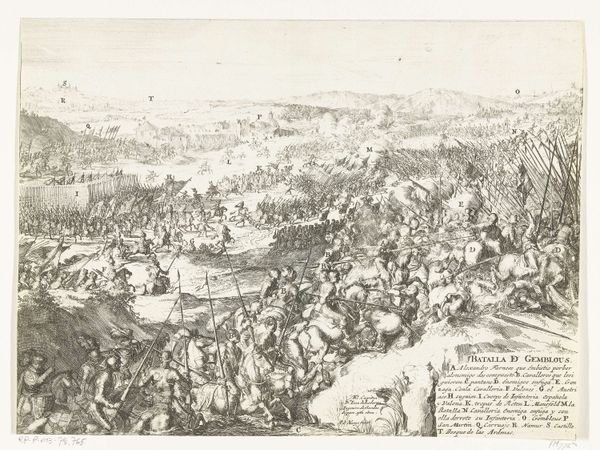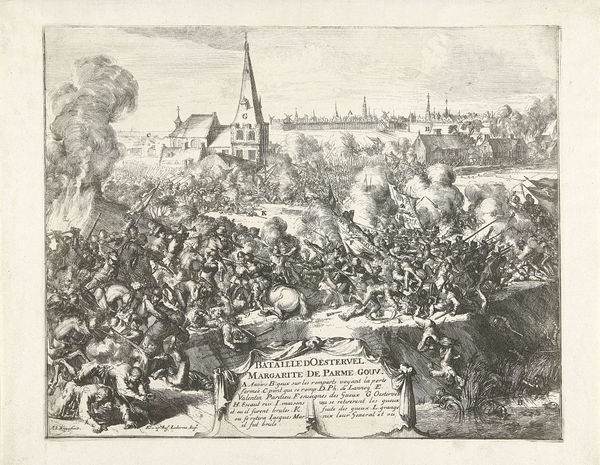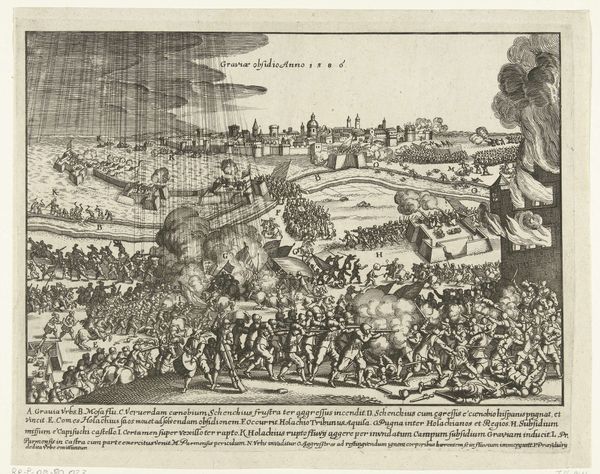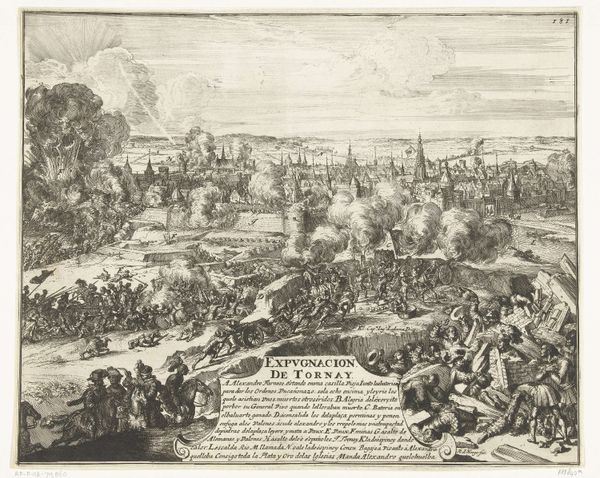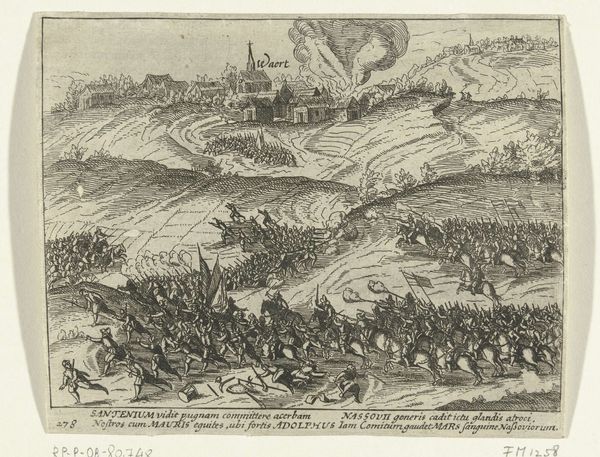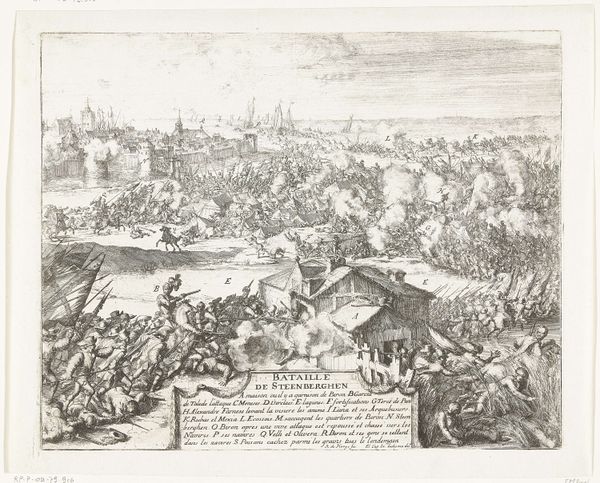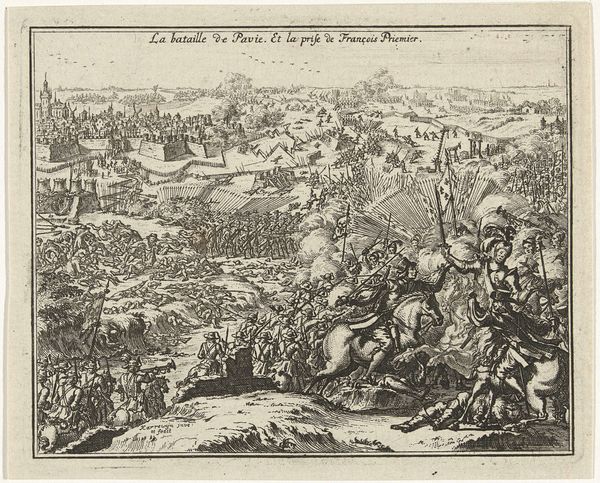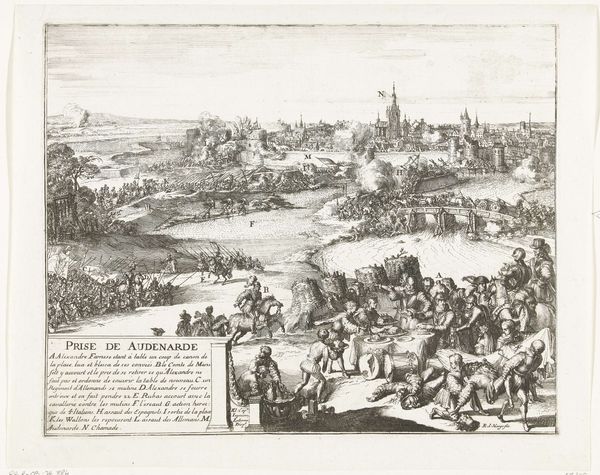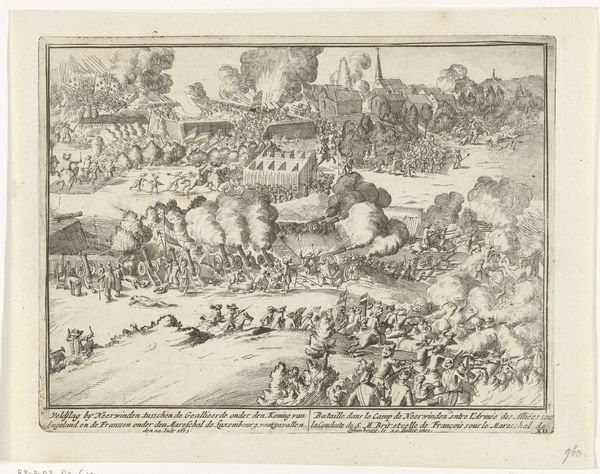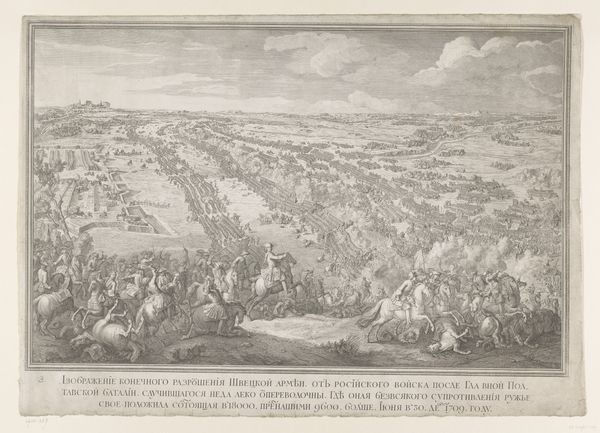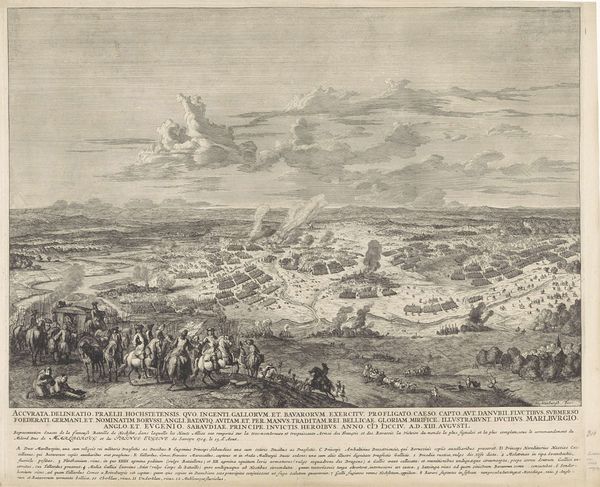
Overwinning van hertog Karel V van Lotharingen en markgraaf Lodewijk Willem van Baden-Baden op de Turken bij Nagyharsány, 1687 1687
0:00
0:00
romeyndehooghe
Rijksmuseum
drawing, ink, engraving
#
landscape illustration sketch
#
drawing
#
narrative-art
#
baroque
#
pen drawing
#
mechanical pen drawing
#
pen illustration
#
pen sketch
#
landscape
#
personal sketchbook
#
ink
#
pen-ink sketch
#
orientalism
#
line
#
pen work
#
sketchbook drawing
#
history-painting
#
sketchbook art
#
engraving
Dimensions: height 294 mm, width 591 mm
Copyright: Rijks Museum: Open Domain
Romeyn de Hooghe created this print of the battle of Nagyharsány in 1687, using the intaglio process. This involved incising lines into a copper plate, inking it, and then pressing paper against the plate to transfer the image. The material nature of the copper plate allowed for incredibly fine detail and complex compositions like this one. To make this work, de Hooghe would have used specialized tools called burins and gravers to meticulously cut the design, which demanded immense skill and control. The image’s appearance, with its dense network of lines, is a direct result of this laborious process. Prints like this one were products of their time. They democratized images, making them accessible to a broader audience beyond the elite. The making of prints like this was essential for circulating ideas, shaping public opinion, and documenting historical events like the battle depicted. Considering the material and processes involved, such as the skilled labor of the engraver and the social function of the print, adds a richer layer to our understanding of the artwork's cultural significance. It challenges the distinction between "high art" and more functional forms of visual communication.
Comments
No comments
Be the first to comment and join the conversation on the ultimate creative platform.
